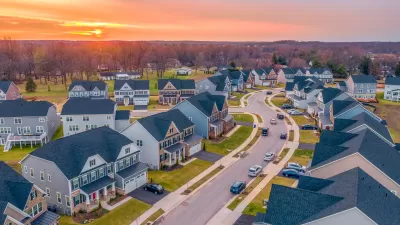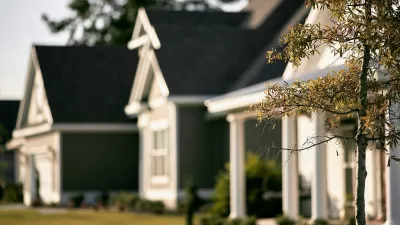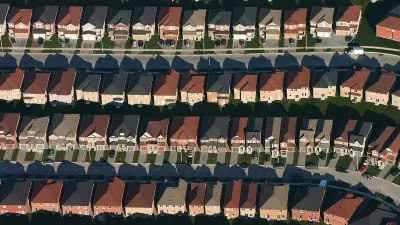"Suburbia," opening today at the new Minnesota History Center in St. Paul, allows a portrait of suburban living that goes well beyond the mundane. By redefining the history suburbia, the exhibit also tracks the contemporary evolution of suburbs.
John Rash reviews the "Suburbia" exhibit, which opened today at the new Minnesota History Center.
According to the themes of the exhibit, "midcentury modern arrived with modern media, especially television" and "[f]ormal rooms gave way to family rooms, and to TVs, which gathered families with programs projecting idealized lives."
The exhibit's designers describe the simultaneous rise of the suburbs and modern media as a matter of symbiosis, not coincidence.
Rash also gives voice to a remarkable opinion that might seem like a long-time coming to fans of the suburbs—the idea that the narrative about the blandness and ennui of the suburbs, which arose as a backlash to the suburbs as the grew to national prominence during the 20th century, might be a better fit for the gentrified urban cores of contemporary times. "Dynamism, however, might be the best description of suburbs today. In fact, urban gentrification can mean that some suburbs better reflect America’s mosaic than the center cities they surround."
Rash also spoke with William Frey, author of the Diversity Explosion, to discuss the evolution of the suburbs.
FULL STORY: Suburbia and modern media in symbiosis

Trump Administration Could Effectively End Housing Voucher Program
Federal officials are eyeing major cuts to the Section 8 program that helps millions of low-income households pay rent.

Planetizen Federal Action Tracker
A weekly monitor of how Trump’s orders and actions are impacting planners and planning in America.

The 120 Year Old Tiny Home Villages That Sheltered San Francisco’s Earthquake Refugees
More than a century ago, San Francisco mobilized to house thousands of residents displaced by the 1906 earthquake. Could their strategy offer a model for the present?

HSR Reaches Key Settlement in Northern California City
The state’s high-speed rail authority reached an agreement with Millbrae, a key city on the train’s proposed route to San Francisco.

Washington State Legislature Passes Parking Reform Bill
A bill that would limit parking requirements for new developments is headed to the governor’s desk.

Missouri Law Would Ban Protections for Housing Voucher Users
A state law seeks to overturn source-of-income discrimination bans passed by several Missouri cities.
Urban Design for Planners 1: Software Tools
This six-course series explores essential urban design concepts using open source software and equips planners with the tools they need to participate fully in the urban design process.
Planning for Universal Design
Learn the tools for implementing Universal Design in planning regulations.
Ada County Highway District
Clanton & Associates, Inc.
Jessamine County Fiscal Court
Institute for Housing and Urban Development Studies (IHS)
City of Grandview
Harvard GSD Executive Education
Toledo-Lucas County Plan Commissions
Salt Lake City
NYU Wagner Graduate School of Public Service





























